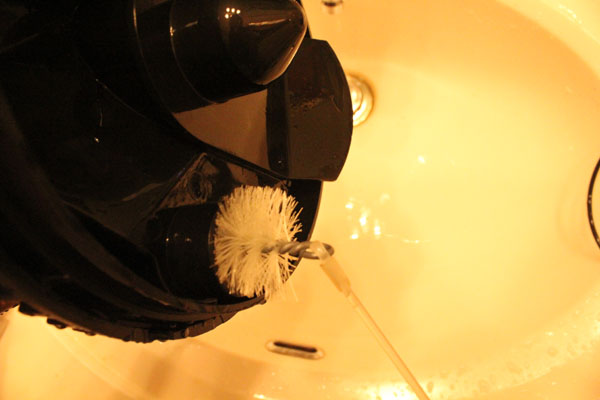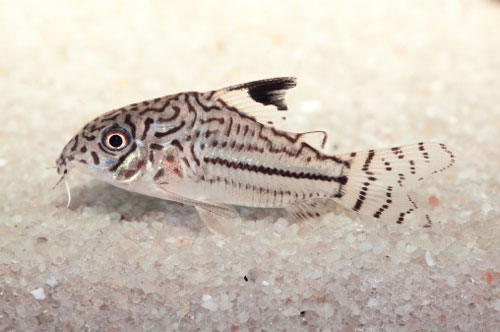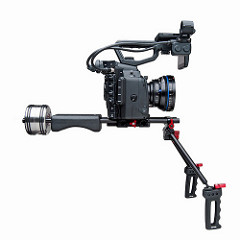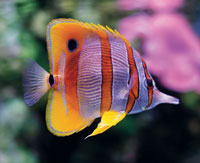
Q. I have unpredictable nitrate levels in my reef aquarium. Sometimes they test below 20 ppm and sometimes they test higher. I want to purchase a denitrification unit to combat this problem. What type of denitrator do you recommend and are these units helpful?
Eric Meytz
Michigan
A. To be totally honest, I’ve never used a denitrator on any of my reef aquariums. Naturally, as long as general aquarium maintenance is kept in check, one of these units isn’t needed in the fish-only environment. Because many corals and invertebrates need clean nitrate-free water to thrive, and keeping nitrates out of the water can be really difficult, these units have become an option for many reef aquarists. From what I have read on various Internet forums and in foreign reef-keeping books, denitrators or nitrate reactors have been popular in Europe for many years and are starting to catch on here in the United States. It should be mentioned that with proper set-up and filtration techniques a reef aquarium should be able to maintain low nitrate levels without one of these units.
Nitrate is the end result of the biological process that takes place in our aquariums. Once ammonia is converted to nitrite (less toxic to animals than ammonia, but still fatal) it is then converted into the far less harmful nitrate. In a standard reef aquarium, even one that houses hardy invertebrates, the presence of some nitrate is expected and not harmful. Many of the demanding reef animals we keep come from waters with very low nutrient levels and nearly perfect conditions. If our aquariums produce nitrate in any great quantity these animals will likely perish. While a nitrate reactor will probably fix the symptom of high nitrate levels, it will not correct the problem that is creating those levels in the first place.
A nitrate reactor works by either incorporating sulfur into denitrification or housing large amounts of anaerobic denitrifying bacteria to break down nitrates. Often, an organic energy source for those bacteria is needed and Denimar tablets are used to accomplish this. In any case I think a nitrate reactor that uses anaerobic bacteria is much safer than trying to use a sulfur-based system. These units will cultivate large amounts of bacteria over whatever surface they supply and reduce the amount of nitrate in the aquarium system.
However, I think more natural methods of combating nitrates will not only reduce the nitrate value in the water, but correct whatever may be causing the problem. Making certain that none of your filters use foam that creates a debris trap is a place to start. In addition to that, adding an above-average protein skimmer to the system, if it does not have one, may help as well. The best way to combat high nitrates is often found in the use of a refugium.
Here you can add copious amounts of live sand, mineral mud and macro algae to break down nitrates and other waste products from the water. In addition to that a refugium serves as a place for copepods and amphipods to proliferate and creates a natural food source for your fish. Many systems that incorporate strong protein skimmers, live rock and a working and established refugium do not need a nitrate reactor.
Also making sure you have a good water-changing schedule, (10 percent water change weekly, 25 percent monthly) can also reduce the amount of nitrates in your water. When doing a water change on any reef aquarium, the use of reverse osmosis/deionized water can greatly increase your chances of success.
At the end of the day, incorporating a nitrate reactor on a reef aquarium is an expensive and almost unnecessary way of controlling spikes in nitrate levels. Good, continuous aquarium husbandry and a working refugium often prove better allies in the battle for better water.
 Useful Idea For Stronger Nutrition And Wellness
It truly does show when you take time to create a proper no
Useful Idea For Stronger Nutrition And Wellness
It truly does show when you take time to create a proper no
 How to Maintain Your Aquarium Filter
Aquarium filtration saw monumental advances in technology du
How to Maintain Your Aquarium Filter
Aquarium filtration saw monumental advances in technology du
 Keep Your Aquarium Clean With These Tank Tools
Success in maintaining a freshwater system takes applied kno
Keep Your Aquarium Clean With These Tank Tools
Success in maintaining a freshwater system takes applied kno
 Catch More Salmon - Follow These Simple To Implement Techniques
FLAT Rigs outriggers, shock cord snubber, and rigging kit i
Catch More Salmon - Follow These Simple To Implement Techniques
FLAT Rigs outriggers, shock cord snubber, and rigging kit i
 Aiptasia Anemone
Aiptasia Anemone
Copyright © 2005-2016 Pet Information All Rights Reserved
Contact us: www162date@outlook.com